I have x,y,z data with categorical variables that facilitate a facet. I want to include contour lines from all but the first facet and discard the rest of the data. One way to visualize the process is to facet the data and mentally move the contours from the other facets to the first.
MWE:
library(ggplot2)
library(dplyr)
data(volcano)
nx <- 87; ny <- 61
vdat <- data_frame(w=0L, x=rep(seq_len(nx), ny), y=rep(seq_len(ny), each=nx), z=c(volcano))
vdat <- bind_rows(vdat,
mutate(vdat, w=1L, x=x+4, y=y+4, z=z-20),
mutate(vdat, w=2L, x=x+8, y=y+8, z=z-40))
ggplot(vdat, aes(x, y, fill=z)) +
geom_tile() +
facet_wrap(~ w, nrow=1) +
geom_contour(aes(z=z), color='white', breaks=c(-Inf,110,Inf))
In each facet, I have:
- facet 0: X,Y,Z for
w==0L, contour forw==0L - facet 1: X,Y,Z for
w==1L, contour forw==1L - facet 2: X,Y,Z for
w==2L, contour forw==2L
What I'd like to have is a single pane, effectively:
- X,Y,Z for
w==0L, contour for all values of thewcategorical
(Forgive my hasty GIMP skills. In the real data, the contours will likely not overlap, but I don't think that that would be a problem.)
The real data has different values (and gradients) of z for the same X,Y system, so the contour is otherwise compatible with the first facet. However, it's still "different", so I cannot mock-up the contours with the single w==0L data.
I imagine there might be a few ways to do this:
- form the data "right" the first time, informing
ggplothow to pull the contours but lay them on the single plot (e.g., using differentdata=for certain layers); - form the faceted plot, extract the contours from the other facets, apply them to the first, and discard the other facets (perhaps using
gridand/orgtable); or perhaps - (mathematically calculate the contours myself and add them as independent lines; I was hoping to re-use
ggplot2's efforts to avoid this ...).



